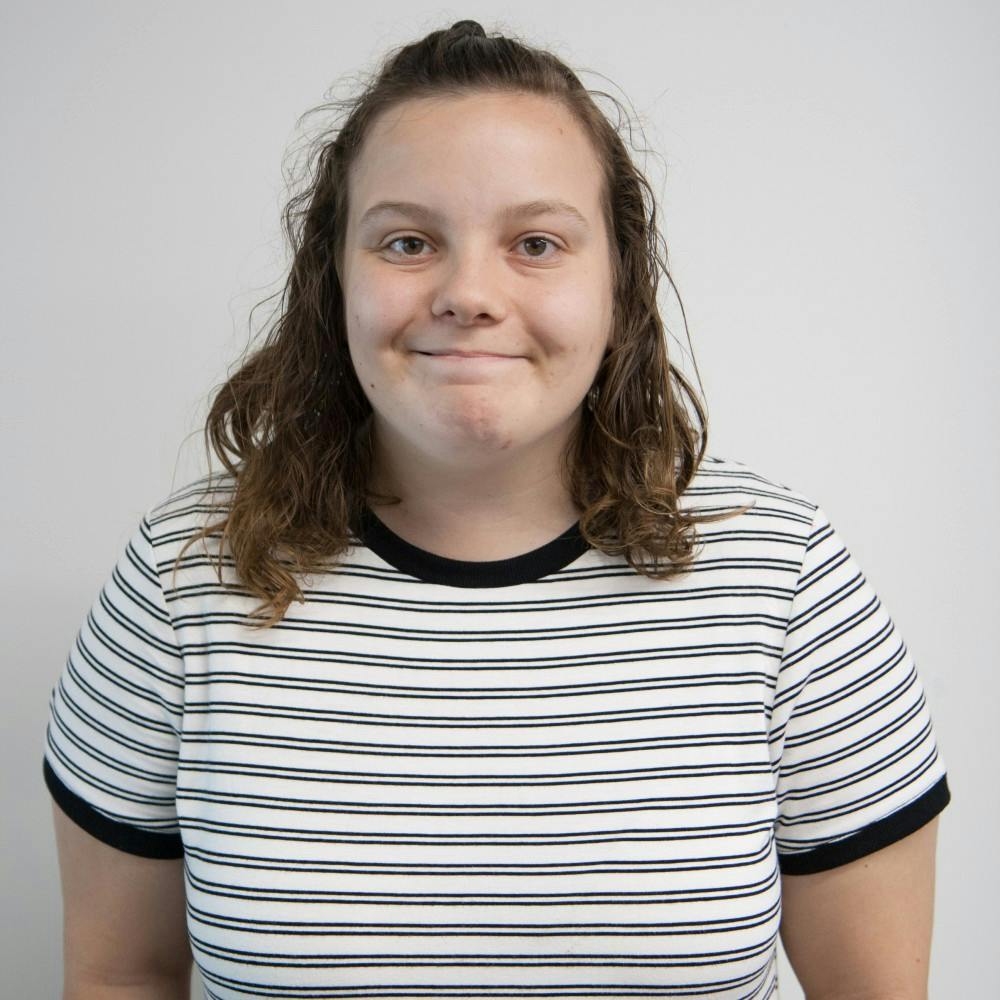Audrey Bowers is a junior english education major and writes "Adult-ish" for the Daily News. Her views do not necessarily agree with those of the newspaper. Write to Audrey at albowers3@bsu.edu.

"Turtles All the Way Down," by John Green, is a book I have been anticipating since its release date was announced.
I remember this distinctly. I was sitting shotgun in my friend Alyssa’s car and we were riding through Broad Ripple on the way to the Indiana Writers Center office for an editing meeting. I talked about how funny it would be to meet John Green while wandering around this area of the city.
I ranted about how I had heard on YouTube that he wasn’t going to write another book and how I would have to give him a pep talk, something along the lines of: “Just do the thing. Write the book. You’re freaking John Green, I’d read anything you’d write, even your grocery lists. It doesn’t have to be like 'The Fault in Our Stars.'”
My friend Alyssa just laughed at me, but seemingly out of nowhere, I gasped. I saw what was probably the best news of my entire existence: John Green was releasing his newest book and it’d be out in October. “Holy moly guacamole, John Green is releasing a new book!” I don’t think I said that, but I said something along the lines of that. I was so stinking excited to get my hands on this book.
As a devoted reader of John Green, I made the trip across Muncie to buy his book the day it came out. It took me less than twenty-four hours to read, in about two or three settings. If I didn’t have the responsibilities of a college junior, I probably would’ve sat down and devoured the whole entire thing in one sitting.
The book did not disappoint me. This book might actually be one of my favorite books that he has written. It doesn’t feel like a stereotypical John Green book that some of my fellow English majors would scoff at.
The book feels real to me as a reader and less boy chases after girl or girl falls hopelessly for boy. Yes, it does a have a relationship in it, but that isn’t the main focus. The book is about a mystery, friendship, and most importantly, what it’s like to live with OCD and anxiety.
Like the main character Aza, I struggle with anxiety. Present tense. This book shows readers that it’s okay to be struggling rather than to have struggled. This book is what I needed when I was sixteen years old. Instead of picking at a callous on my finger like Aza, I would pick at zits on my face until they were wide open wounds. I didn’t want giant holes on my face, but I just couldn’t stop nervously picking.
Also Like Aza, I have often felt alienated at times for my mental health struggles. No one really understood why I behaved the way I did, nor did they see how uncomfortable and self-conscious I felt. They never understood the spiral going on in my mind, how consumed I was with thought after thought. I didn’t either. This book gave me a metaphor to describe my all-consuming thought patterns that continue, even to this moment that I’m writing this, and it reminded me that I am not alone.
I like the way the book describes the type of panic that you cannot control. It reminded me of a time when my anxiety got the best of me. I was in Ireland during study abroad and I had been exploring Dublin the whole day.
It was a great day until I realized that I left my room key somewhere. I asked the clerk at the hotel for a new key, accidentally opened the wrong apartment, started freaking out because I thought everyone thought I was stupid, got the right key, ran up to my room, and laid on the bed while it felt like my heart was going to pound out of my chest.
My thoughts were like a spiral, one after the next, flowing into infinity.
I wish that I knew this was normal for people struggling with anxiety, because it felt anything but normal.
While one may think, “Oh, this is just another overhyped John Green book,” another person in middle school, high school, college, or well into their career may be seriously helped by this book, whether it’s because they see themselves, their parents, their friends, their colleagues, their classmates, their students, etc. represented within the text. I definitely recommend this book. At just 280-ish pages it’s not that long of a book, and in my opinion, it was worth reading every page.




